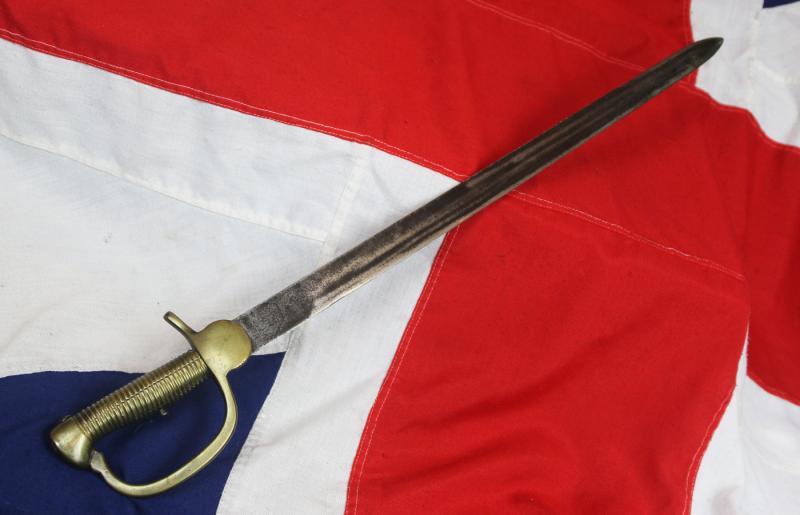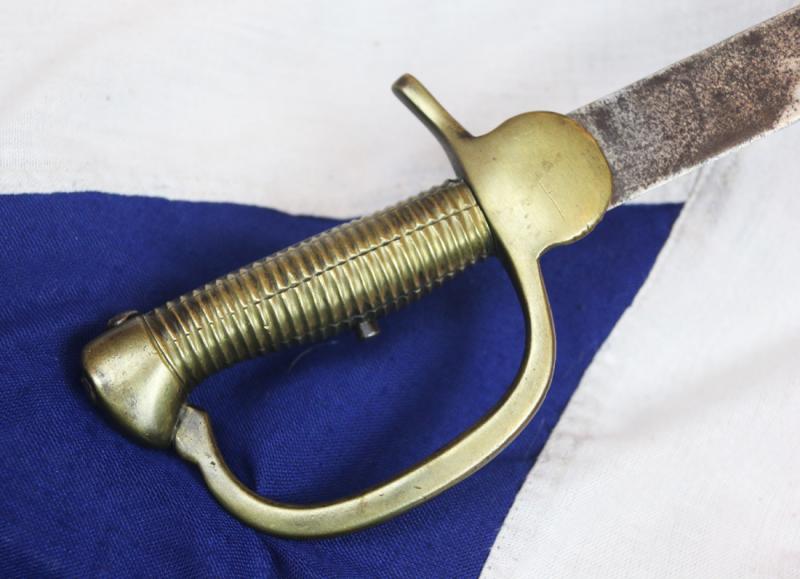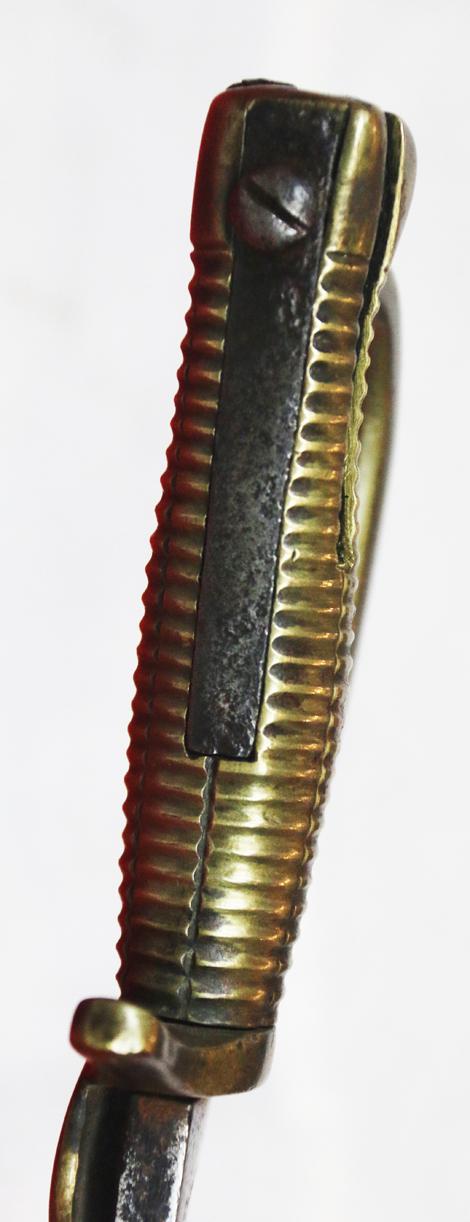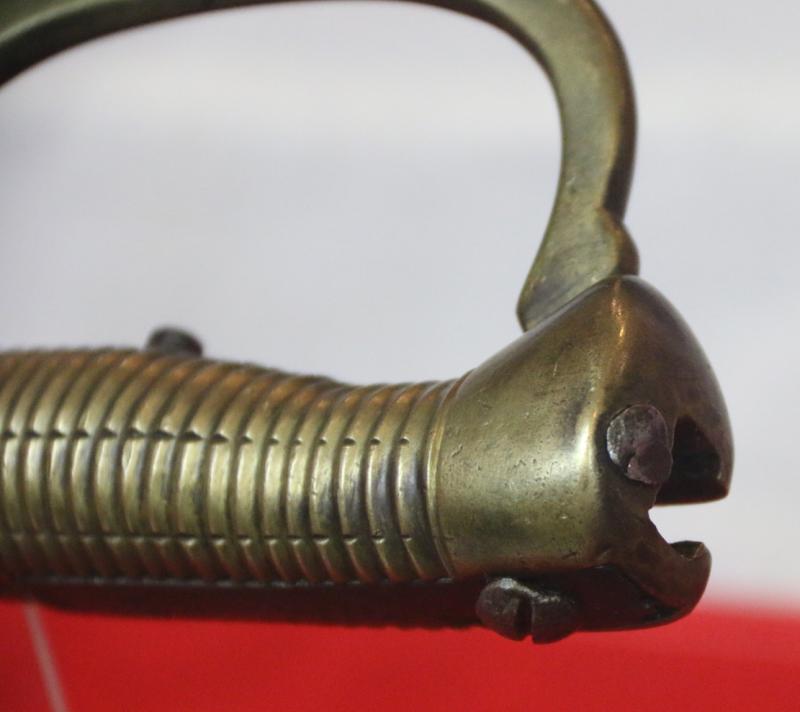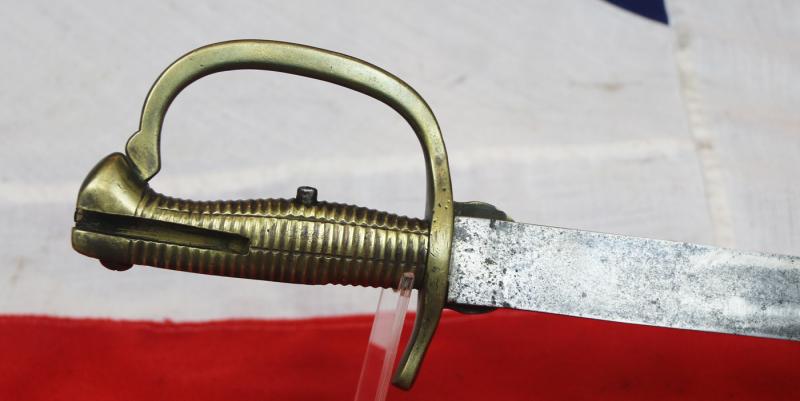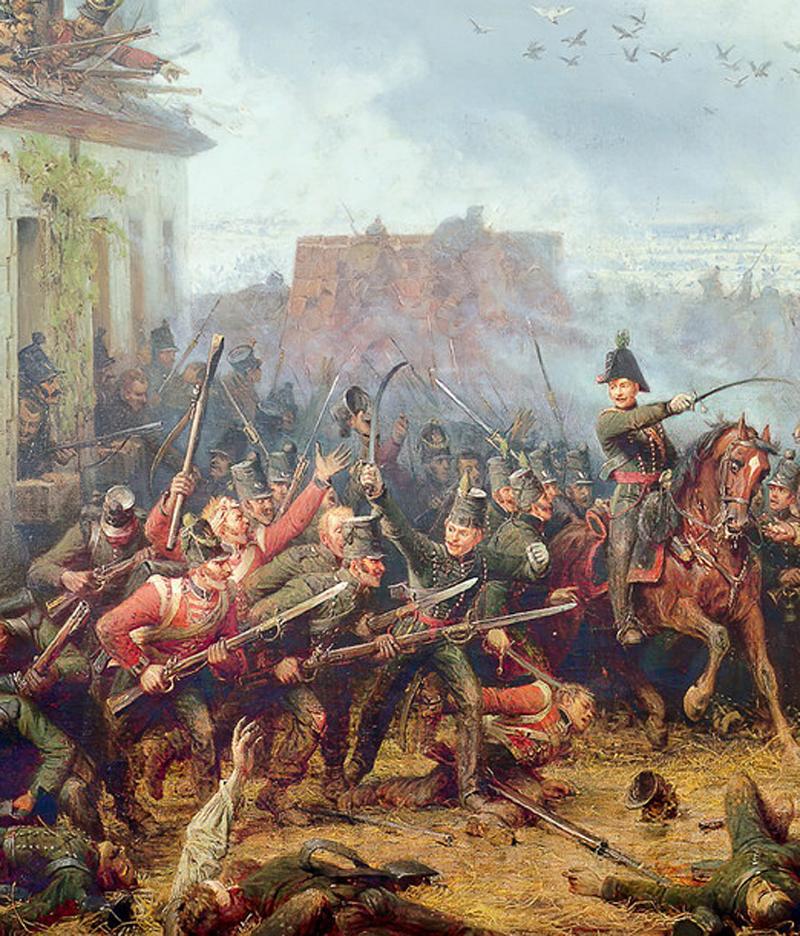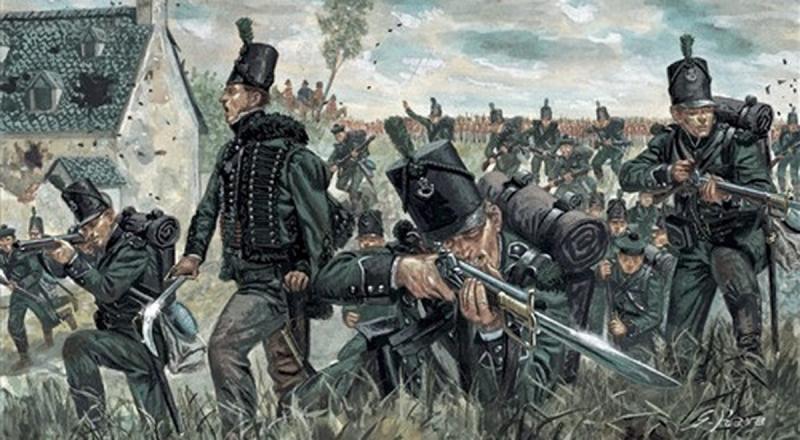An 1801 Pattern Baker Rifle Sword {Bayonet}. Brass D Hilt & Single Edged Long Sword Blade
Traditional ribbed grip hilt, flattened section knucklebow, slightly bent quillon with long retaining spring, released by press catch. 23 inch steel flat sided single edged blade with return false edge. No maker markings remaining.
The sword that affixes to the end of a rifle as a bayonet. However, as all British Army riflemen know, the rifleman carries a sword, not a bayonet, despite it looking and acting as one. The rifle was used throughout the entire Peninsular Wars, the War of 1812 in America and Waterloo, by the world's greatest marksmen to fight for King and Country. This is not the denigrate our cousins, the American Riflemen of course, but they were not fighting for King and Country.
The British army had learned the value of rifles from their experience in the American rebellion in the 1770's. However, existing rifle designs were considered to be to cumbersome, slow-firing, fragile or expensive to be put to use on any scale beyond irregular companies. Rifles had been issued on a limited basis and consisted of parts made to no precise pattern, often brought in from Prussia. The war against Revolutionary France resulted in the employment of new tactics, and the British Army responded, albeit with some delay. Prior to the formation of an Experimental Rifle Corps in 1800, a trial was held at Woolwich by the British Board of Ordnance on 22 February 1800 in order to select a standard rifle pattern; the rifle designed by Ezekiel Baker was chosen.
Colonel Coote Manningham, responsible for establishing the Rifle Corps, influenced the initial designs of the Baker. The first model resembled the British Infantry Musket, but was rejected for being too heavy. Baker was provided with a German Jager rifle as an example of what was needed. The second model he made had a .75 calibre bore, the same calibre as the Infantry Musket. It had a 32-inch barrel, with eight rectangular rifling grooves; this model was accepted as the Infantry Rifle, but more changes were made until it was finally placed into production. The third and final model had the barrel shortened from 32 to 30 inches, and the calibre reduced to .653, which allowed the rifle to fire a .625 calibre carbine bullet, with a greased patch to grip the now-seven rectangular grooves in the barrel. The rifle had a simple folding backsight with the standard large lock mechanism (marked 'Tower' and 'G.R.' under a Crown, although later ones had 'Enfield,' but these only saw service after Waterloo), with a swan-neck cock as fitted to the 'Brown Bess.' Like the German Jager rifles, it had a scrolled brass trigger guard to help ensure a firm grip and a raised cheek piece on the left-hand side of the butt. Like many rifles, it had a 'butt-trap' or patchbox where greased linen patches and tools could be stored. The lid of the patchbox was brass, and hinged at the rear so it could be flipped up. The stocks were made of walnut and held the barrel with three flat captive wedges. The rifle also had a metal locking bar to accommodate up to a 23- inch sword bayonet, similar to that of the Jager rifle. The Baker was 45 inches from muzzle to butt, 12 inches shorter than the Infantry Musket, and weighed almost nine pounds. Gunpowder fouling in the grooves made the weapon much slower to load and affected its accuracy, so a cleaning kit was stored in the patch box of the Baker; the Infantry Muskets were not issued with cleaning kits.
Code: 25073
885.00 GBP

